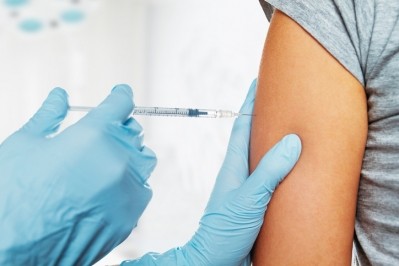Microneedle patch stable, painless and simple say researchers

Researchers from the Georgia Institute of Technology and Emory University undertook a Phase I trial funded by the National Institute of Health (NIH), results of which were published in medical journal The Lancet.
Blood samples from subjects who received the transdermal patch presented similar antibody responses generated by the vaccine to those from subjects who received intramuscular injections. These immune responses were still present after six months.
Further, Georgia Institute of Technology said the delivery method’s lack of temperature control requirement is an improvement on traditional immunisation methods.
“The manufacturing cost for the patch is expected to be competitive with prefilled syringe costs. It can be easily packaged for transportation, requires no refrigeration, and is stable,” said the Georgia Institute of Technology.
Microneedle tech
The microneedle patch is comprised of 100 solid, water-soluble needles, which researchers said painlessly penetrate the skin when adhered.
“The skin is an immune surveillance organ. It’s our interface with the outside world, so it’s very well equipped to detect a pathogen and mount an immune response against it,” said Georgia Institute’s Mark Prausnitz.
“We expect microneedles to be less painful than conventional hypodermic needles because they are too small to significantly stimulate nerve endings,” he said.
The vaccine is contained in the needles, and released into the skin as the needle tips dissolve. After a few minutes, the patch can be peeled off and discarded as non-sharps waste.
Thermostability
Researchers said the drug delivery technology has increased thermostability compared to traditional syringe immunisation methods, reporting that the patches retained the vaccine without refrigeration for at least one year.
The impact of this technology in hot climates could be big, said Georgia Institute.
“At Georgia Tech we are doing work in collaboration with Emory University as well as with the US Centre for Disease Control and Prevention to look at the possibility of using the microneedle patch vaccination method for other vaccines and particularly to benefit needs in developing countries such as the effort to eradicate polio and efforts to eliminate measles and rubella throughout the world,” said Prausnitz.
Self-administration
The Georgia Institute also said the technology could reduce vaccine costs, through self-administration.
“Flu vaccination is usually given by an intramuscular injection done by a highly trained, health care professional. We would like to be able to change that, and use the microneedle patch so that it can be done in a painless way so that so that people will be willing to get the flu vaccine, and a simple way, so that patients could self-administer,” said Prausnitz.
Nadine Rouphael from Emory University said self-administration could also reduce the transmission of illnesses.
“Also, microneedle patches are timely, as we are preparing for an influenza pandemic , each one of us could self-administer the vaccine, increasing speed of vaccination and by removing the bottleneck of healthcare worker availability and also reducing risk of transmission of the pandemic influenza by avoiding concentration of patients at the clinics,” she said.
Rouphael said more testing of the microneedle patch technology is required in different population groups, age groups, and with other types of vaccines, before it reaches commercialisation.
“We also need to have a better understanding of the exact immunologic mechanisms that are driving the success of the microneedle patches as a vaccine delivery method,” she said.



















